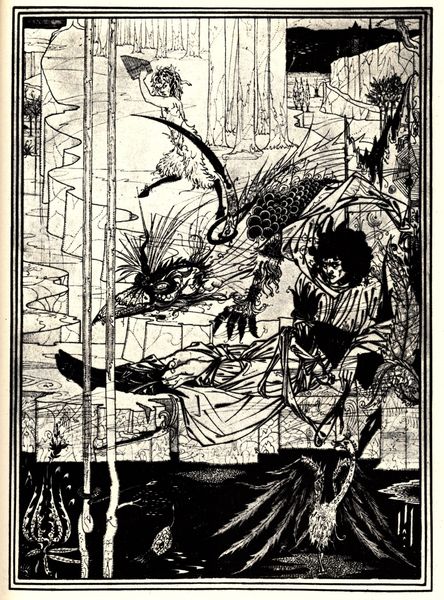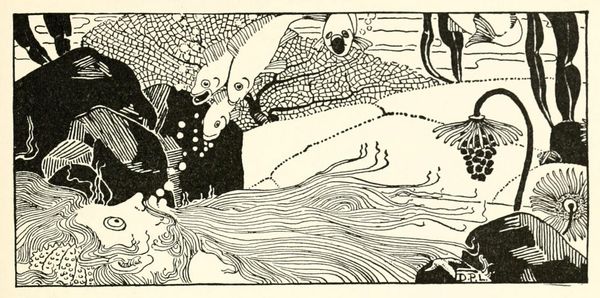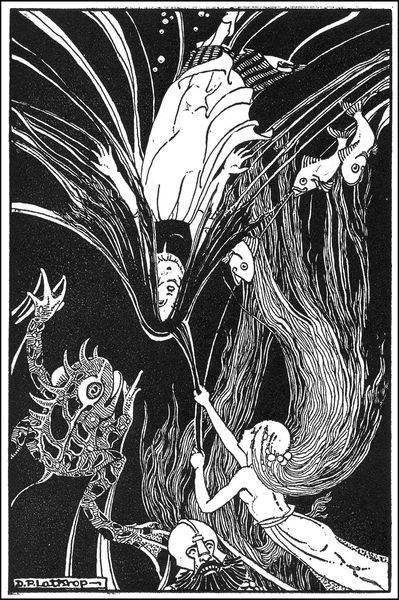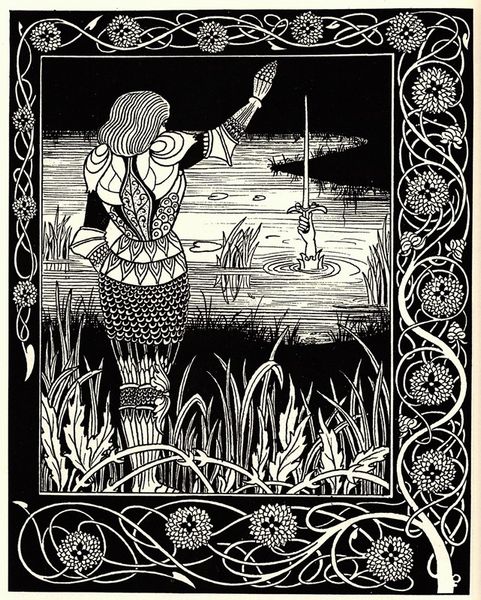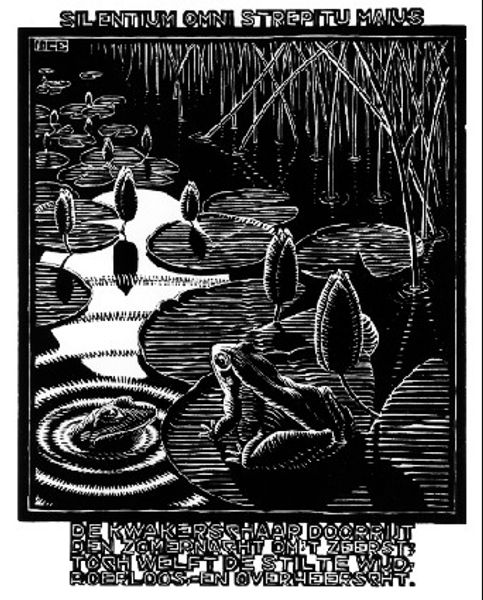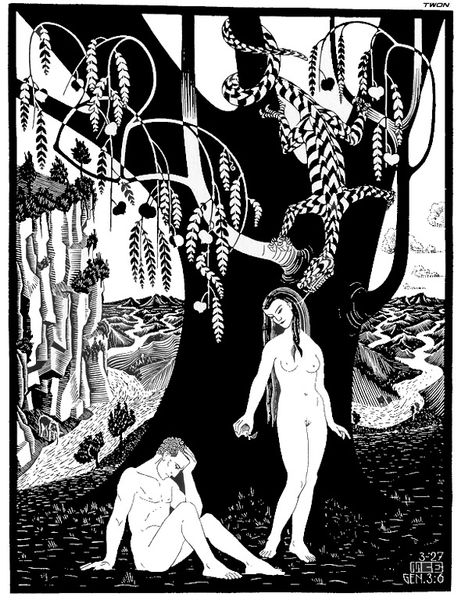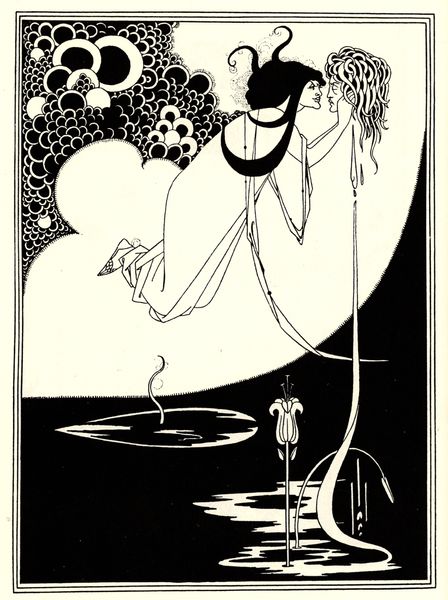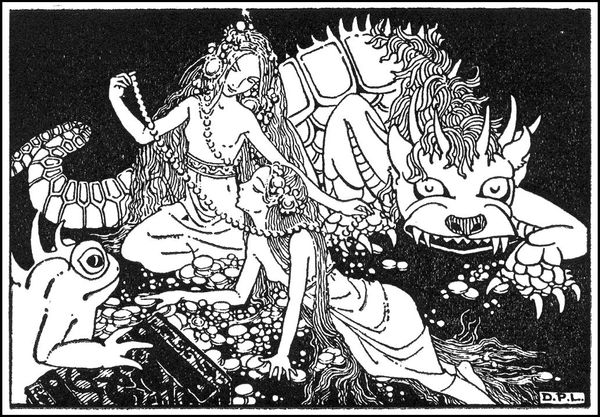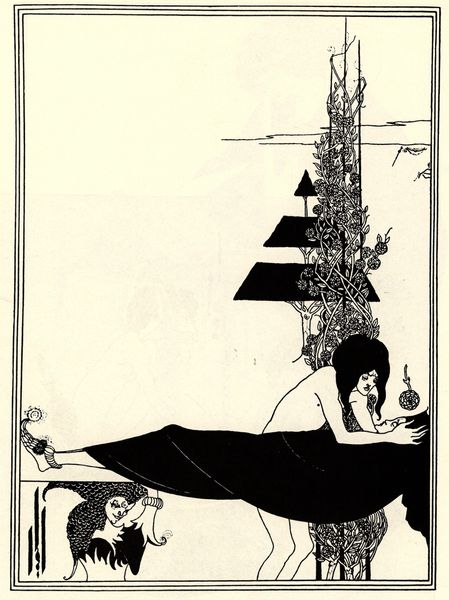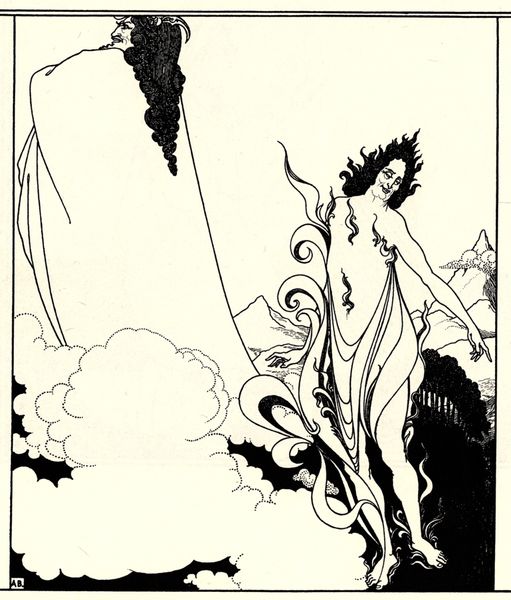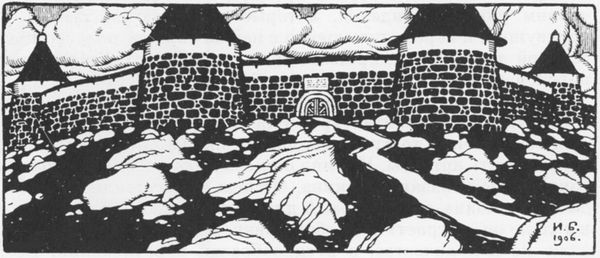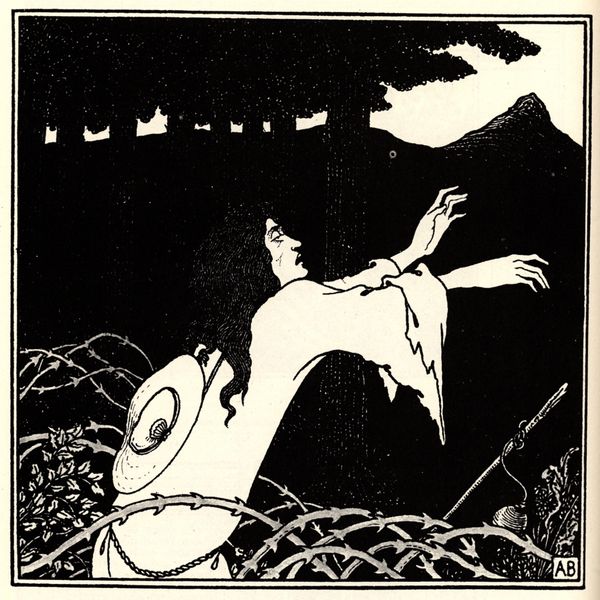
print, woodcut
# print
#
landscape
#
bird
#
german-expressionism
#
figuration
#
ink line art
#
expressionism
#
woodcut
#
abstraction
#
symbolism
Dimensions: 13.6 x 14.4 cm
Copyright: Public domain
Curator: Here we have Wassily Kandinsky's "Two Birds," created in 1907. It's a stark black and white woodcut print. What are your first thoughts? Editor: Brooding. The heavy use of black creates a powerful, almost unsettling atmosphere. The figures seem suspended between worlds. Curator: Indeed. The woodcut process lends itself to such striking contrasts, doesn't it? Think about the labor involved in carving those blocks, removing material to create these defined shapes. The conscious choice of wood as a medium certainly roots the work in a pre-industrial artistic tradition, at the crossroads of folk art and avant-garde concerns. Editor: Absolutely, and the birds themselves, especially the one in flight with the flowing lines of its tail, they symbolize freedom, aspiration... perhaps a release from the darker, more earthbound forms in the composition. The one perched looks watchful. Curator: German Expressionism, which deeply influenced Kandinsky at this time, explored intense emotional experience. Do you think that’s rendered visible here? It may not appear too symbolic from the start, but once considered a possible interpretation, the title "Two Birds" acquires significance and complexity Editor: I do. Look at the humanoid figures with elongated faces and gestures, they echo that raw emotion. They are clearly abstracted, symbolic figures rather than portraits. Their postures invite introspection. The image's dreamlike quality makes you want to interpret. Curator: Considering the materials available to Kandinsky and his embrace of non-traditional processes, we get the very sense of him challenging what constituted acceptable artistic practice and who gets to create. Editor: The use of birds—as symbols of the soul or messengers between worlds—is a recurrent motif in many cultures and speaks to shared human concerns regarding life, death, and transcendence. This connects Kandinsky’s aesthetic vision with an established tradition, even while pushing towards pure abstraction in other work. Curator: Yes, and the black and white printing underscores its function, and dissemination in an age where visual communication was tied to print, giving artwork an unusual cultural context Editor: Looking at this stark visual drama reminds one how powerfully symbols communicate. It's about looking beyond surface appearances, feeling into what images evoke over time, in your culture and across the human family. Curator: Absolutely, analyzing art in this fashion allows the viewer to acknowledge its ability to connect to humanity and a social construct, to embrace symbolism and tradition to explore art, not only in that particular setting but also where it intersects within a grander system. Editor: Ultimately, that contrast highlights the enduring power that simple forms and archetypes hold.
Comments
No comments
Be the first to comment and join the conversation on the ultimate creative platform.
